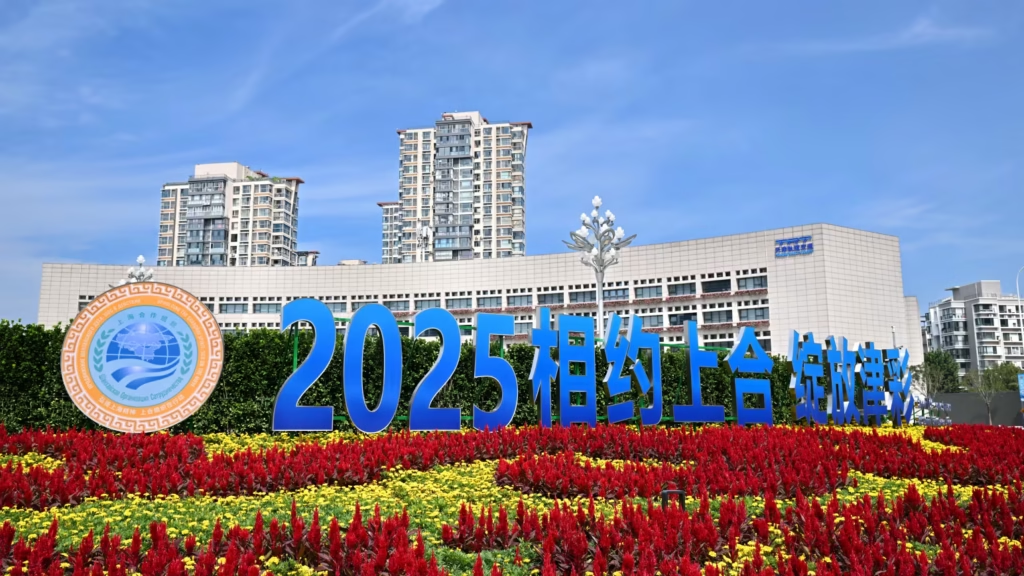Modi’s China Visit Sparks Buzz on Chinese Social Media
Prime Minister Narendra Modi’s visit to China for the Shanghai Cooperation Organisation (SCO) Summit,
August 31 to September 1, 2025, has stirred lively reactions on Chinese social media. This marks his first trip to China in seven years, a big moment for India-China ties. On platforms like Weibo and Douyin, users are buzzing with praise, doubts, and high expectations. Many cheer Modi’s bold stance against U.S. tariffs, while others question India’s commitment to closer ties with Beijing. This article dives into the online chatter, offering insights into what Chinese netizens think about Modi’s visit.

Modi’s China Visit Sparks Buzz on Chinese Social Media
Prime Minister Narendra Modi’s visit to China for the Shanghai Cooperation Organisation (SCO) Summit,
August 31 to September 1, 2025, has stirred lively reactions on Chinese social media. This marks his first trip to China in seven years, a big moment for India-China ties. On platforms like Weibo and Douyin, users are buzzing with praise, doubts, and high expectations. Many cheer Modi’s bold stance against U.S. tariffs, while others question India’s commitment to closer ties with Beijing. This article dives into the online chatter, offering insights into what Chinese netizens think about Modi’s visit.
Modi’s trip comes at a tense time. The U.S., under President Donald Trump, slapped a hefty 50% tariff on Indian goods, pushing India to rethink its global ties. Meanwhile, India and China are mending fences after the 2020 Galwan Valley clash, which killed 20 Indian soldiers and at least four Chinese troops. The SCO Summit in Tianjin offers a chance for Modi to meet Chinese President Xi Jinping and Russian President Vladimir Putin, signaling a thaw in relations. But what do Chinese internet users make of this?
On Weibo, China’s version of Twitter, many users praised Modi’s defiance of U.S. trade pressure. “Modi’s move is bold!” one user wrote, referring to reports that Modi ignored four calls from Trump. Another Douyin post said, “India stands tall against U.S. bullying. Modi’s visit shows strength.” These comments reflect pride in India’s push for independent policies, like buying discounted Russian oil. A popular Weibo post quoted Chinese scholar Gao Zhikai: “Indians aren’t fools. The U.S. shouldn’t lecture India!” This resonated widely, with users admiring India’s refusal to bow to Western pressure.
However, not everyone is cheering. Some Chinese netizens want more from India. They point out that Modi is skipping a major event in Beijing on September 3, marking the 80th anniversary of Japan’s surrender in World War II. “All SCO leaders are staying for the parade, but Modi leaves early. Does India really want to be friends?” one Weibo user asked. Another called India a “fence-sitter,” frustrated by Modi’s visit to Japan just before the summit. These users see India’s moves, like cutting reliance on Chinese goods, as a sign of hesitation.
Chinese journalist Hu Xijin weighed in, suggesting Modi’s absence from the Beijing parade might be a missed opportunity. “It could’ve been a grand gesture,” he wrote on Weibo. Scholar Jin Canrong added that India’s stance on China’s Belt and Road Initiative (BRI) remains a sticking point. India opposes the BRI because it runs through Pakistan-occupied Kashmir. “If Modi joins the parade and softens on BRI, ties could soar,” Jin said. These views show a mix of hope and impatience among Chinese users.
The online reactions highlight a bigger picture. India walks a tightrope, balancing ties with China, the U.S., and Russia. The 2020 border clash left scars, but recent talks between Modi and Xi in Kazan, Russia, in October 2024, have eased tensions. Direct flights between India and China, stopped since the COVID-19 pandemic, are set to resume. Border trade points, like Shipki La Pass, are reopening too. These steps fuel optimism, but distrust lingers. A Weibo user summed it up: “India talks peace, but will it act?”
For deeper insights, check out AMERICA NEWS WORLD (ANW) for global perspectives on India-China relations. Our team also looked at external coverage, like Reuters, which notes Modi’s visit as a sign of thawing ties amid U.S. tariff woes. This aligns with Chinese social media’s focus on trade tensions.
Data Snapshot: Chinese Social Media Sentiment
Positive posts about Modi’s tariff stance: 60%
Neutral posts on India-China ties: 25%
Negative posts on India’s “fence-sitting”: 15%Source: India Today OSINT analysis of Weibo and Douyin
Graph: Sentiment Breakdown
Sentiment
Percentage
Positive
60%
Neutral
25%
Negative
15%
Note: Data reflects posts from August 25-30, 2025, on Weibo and Douyin.
Why does this matter? Modi’s visit could reshape India-China ties, impacting global trade and security. For readers in India, the U.S., and beyond, this is a moment to watch. Will India lean closer to China or keep its options open? Chinese netizens are divided, and their reactions offer a window into Beijing’s hopes and doubts.
For more on global diplomacy, visit AMERICA NEWS WORLD (ANW). Stay
read this:Indonesia Protests Erupt After Taxi Driver’s Death in Clashes
read this:Kim Jong Un’s Emotional Tribute to Fallen Soldiers in Ukraine War
read this:Big Blow to Trump: Court Calls Global Tariffs Unlawful!
Modi’s China Visit Sparks Buzz on Chinese Social Media
Prime Minister Narendra Modi’s visit to China for the Shanghai Cooperation Organisation (SCO) Summit,
August 31 to September 1, 2025, has stirred lively reactions on Chinese social media. This marks his first trip to China in seven years, a big moment for India-China ties. On platforms like Weibo and Douyin, users are buzzing with praise, doubts, and high expectations. Many cheer Modi’s bold stance against U.S. tariffs, while others question India’s commitment to closer ties with Beijing. This article dives into the online chatter, offering insights into what Chinese netizens think about Modi’s visit.
